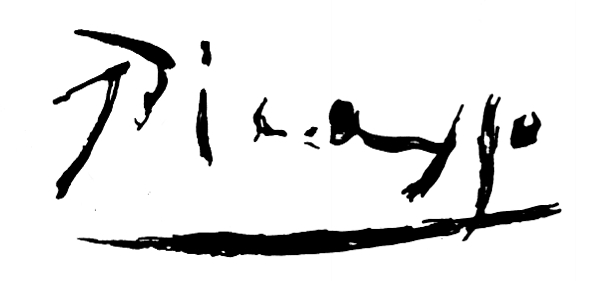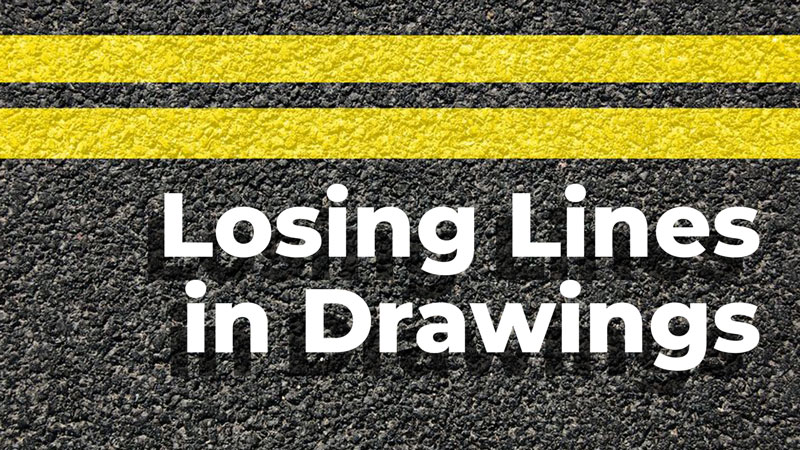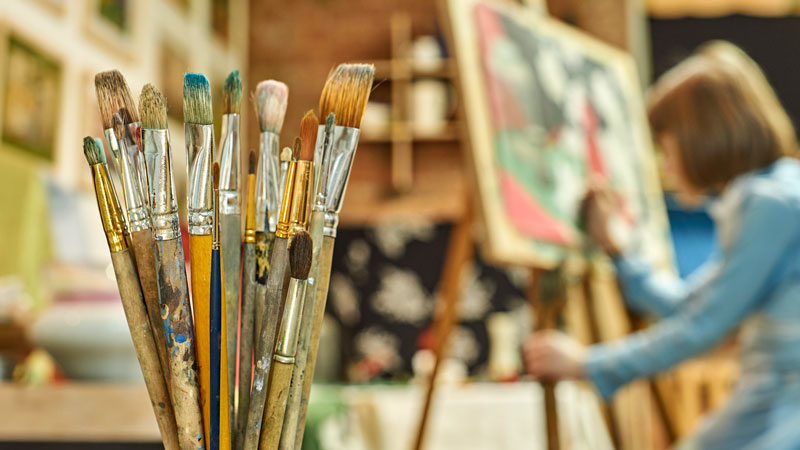
Believe it or not, this is a common conundrum for artists. At the conclusion of every artwork, artists are faced with decisions on how to handle the signature. So, if you’re facing this, you can take comfort knowing that you’re not alone.
Don’t Make a Hasty Decision with Your Signature
If you’re reading this, then you probably don’t into the first category of “signers” that simply slap a signature on the artwork without much thought of the aesthetic implications. The fact that you are reading this indicates that you are giving the signature some thought. And it should be given thought – lots of it in fact, since the signature can add to the work, if used correctly. It can also detract from the work if it is added without considering its aesthetic influence.
Unfortunately, I see far too many students make a hasty decision and just add their signature quickly, without thought. Sometimes, this thoughtless decision can wreak havoc on the finished artwork.
Here are a few examples of hasty decisions on signing that may destroy an otherwise successful work…
Signing the artwork with a huge or oversized signature – Your signature should be proportional to the picture plane. In other words, a larger painting may require a larger signature, but you shouldn’t place a large signature on a small painting.

Signing too close to the edge of the paper or canvas – Elements placed too close to the edges of the picture plane may create negative tension in the composition, pulling focus from the elements that you want people to see in your artwork. Signing too close to the edge will make your work nearly impossible to frame without partially covering the signature.

Signing with black on a color artwork – Black is a very strong color and will clash with an artwork that is color. This strong contrast will pull the viewer’s eye to the signature, instead of the artwork.
Considerations for Signing Artwork
Do You Really Need to Sign the Artwork? – Not all works require a signature. I know that this may sound strange, but many artworks are never signed.
When might you not sign the artwork?
Artworks that are commercial in nature will not require a signature. Illustrations that are produced for publication are not about the artist. Therefore, a signature can be left off entirely. I know that I may be causing a bit of controversy including illustration as an art form, but I’ve already addressed my opinion on the matter in this post.
Does the Signature Add or Detract from the Art? – Sometimes the signature can demand too much attention way from the artwork itself if not approached with care and thought. The color used, the placement on the surface, the size, etc. will all play an important role in determining whether or not your signature will enhance the artwork or destroy it.
Pick colors that will complement your work. Sign your work using colors that already exist in the art in order to harmonize the composition. But keep in mind that by doing so, you may attract more attention to your signature.

Another option is to sign the work in a less obvious location. In the following the example, the artwork is signed vertically next to the stem of the wine glass. This signature blends in with the artwork and is not too obtrusive.

Will the Signature Enhance the Chances of Your Work Being Sold? – Are people more likely to purchase your art based on the name that is on it. Picasso lived a very productive life as an artist, producing many works. Not all of his works were “Masterpieces”. In fact some of them may have been considered outright “duds”. But people will pay large sums of money for his “duds” simply because his name is on them.
Do you fall into this category? Will people be drawn to purchase your work because it has your name on it? If so, then you need to find a way to work the signature into the composition and perhaps make it very prominent.
Truthfully, most of us do not fall into the “Picasso” category and people are not buying our work because of the name in the signature.
Because we are not all Picassos (yet), we need to be careful that we don’t become too pretentious with our signature, because not only can that hurt the aesthetic success of the artwork, but we can also turn people off in general.
Be Consistent – Your signature is seen as a trademark of sorts – almost like a logo. People will mostly see your signature as an image instead of a collection of letters. Therefore, I think it is only wise to be consistent with your approach to signing your artwork. I wouldn’t recommend using your entire name one day and then deciding to switch to your initials the next, especially if you are already making art professionally.
Picasso’s signature was a model of consistency. It is super easy to recognize and was used consistently – right down to the underlining.

Final Thoughts
Ultimately, your signature is yours – just like your artwork. The manner in which you decide to sign your work (or don’t sign your work) is a personal decision. My opinion is to approach the artist’s signature like you would any other factor within the artwork – as an aesthetic element.
If so, join over 36,000 others that receive our newsletter with new drawing and painting lessons. Plus, check out three of our course videos and ebooks for free.
Lesson Discussion
Comments are closed.






I am both an artist and gallery owner. A photographer friend signs his name in fancy cursive right in the middle of his photos (at the bottom, of course!) I feel very strongly his signature detracts attention from his images. Am I wrong?